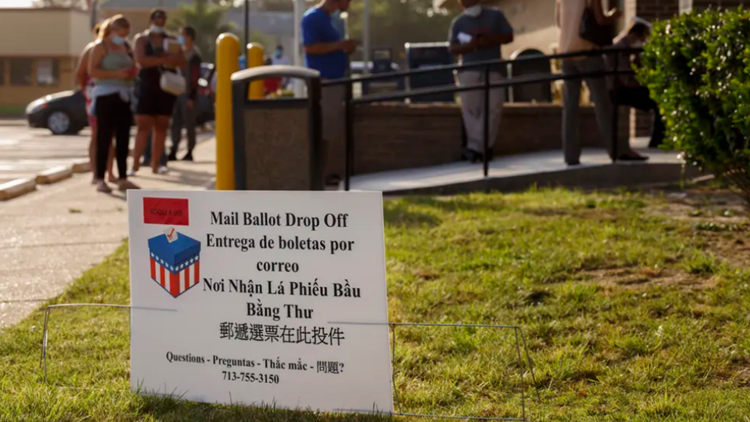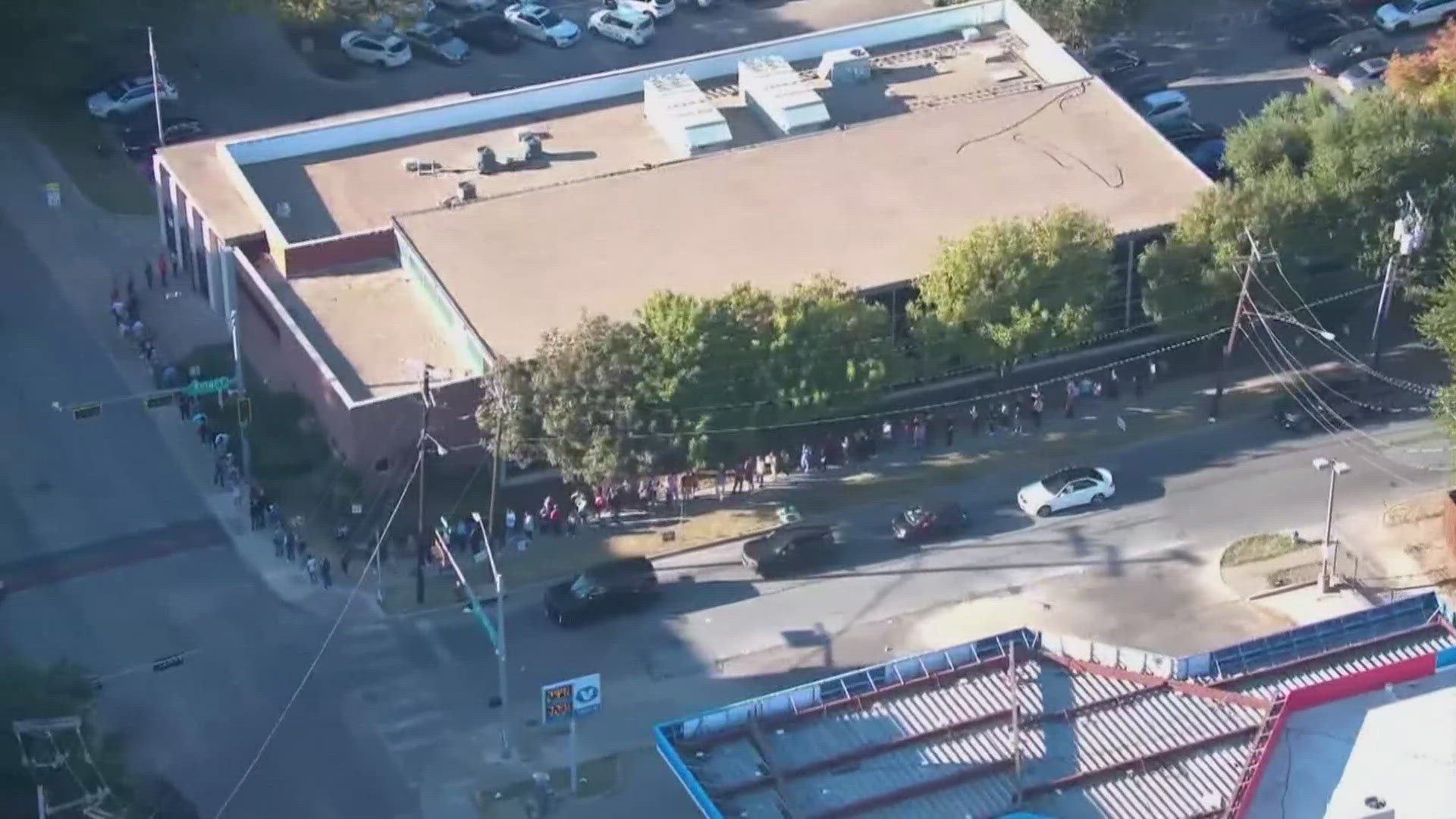This story was originally published in The Texas Tribune.
Texas is gearing up for a monumental election in the middle of a pandemic. And while the state is one of just six that hasn’t opened up mail-in voting to any voter concerned about getting COVID-19 at a polling place, election officials expect a record number of people to vote by mail this year.
Democrats, civil rights groups and individual voters have filed multiple lawsuits seeking to expand voting by mail. But those cases have so far been rejected by the courts — or are still pending. So as of Thursday, most of the state's traditional rules remain in place. Here’s a look at how voting by mail works in Texas.
How do I qualify to vote by mail in Texas?
Registered voters can qualify to vote by mail if they are 65 years or older, cite a disability or an illness, or are confined in jail but still eligible to vote. Voters who will not be in the county where they're registered on Election Day and during the entire early voting period can also request a ballot by mail.
Take note that the Texas election code’s definition for disability is broader than other federal definitions. A voter is eligible to vote by mail based on disability if they have a “sickness or physical condition” that prevents a voter from appearing in person without personal assistance or the “likelihood of injuring the voter’s health.” While lack of immunity to the new coronavirus alone doesn’t qualify a voter for a mail-in ballot based on disability, a voter can consider it along with their medical history to decide if they meet that definition.
How can I submit an application to vote by mail?
To apply for a mail-in ballot, you must deliver a completed application for ballot by mail to your county elections office. Applications can be dropped off in person before the start of early voting, which begins Oct. 13 for the general election, and local election officials must receive mailed applications by Oct. 23.
(Applications can also be submitted by fax or email, but the county must receive a hard copy within four business days.)
You can print out your own application, contact your local elections office to receive one or request one from the secretary of state’s office. Contact information for early voting clerks in every county can be found here. Military or overseas voters can obtain an application here.
I voted by mail in another election this year. Do I have to reapply for November?
This depends on how you filled out your first application for a mail-in ballot. Texas allows voters to request ballots for an individual election or for every election in a calendar year. You'll want to confirm this with your county elections office.
When will I get my ballot?
There is no specific date, but there are rules counties must follow. If your county elections office receives your application to vote by mail more than 45 days before Election Day, the county must send your ballot at least 30 days out from the election. Some counties are aiming to get the ballots out sooner, but they can't send them until the entire county ballot — from the race for president to local water districts — is certified.
If your application is received after the 45-day mark, the county must mail out your ballot within seven days of approving your application.
Mail-in ballots will start going out Sept. 19 to military or overseas voters.
What is the deadline to submit my ballot?
For most people voting absentee, Texas counties must receive completed ballots by Election Day. If they’re postmarked by 7 p.m. that day, they’ll be counted if they come in the next day by 5 p.m.
The U.S. Postal Service recommends that Texans ask for mail-in ballots no later than 15 days out from that due date. But state law allows voters to request the ballots up until a week and a half before Election Day, so some may not receive their ballots until it’s too late to mail them back in time.
Texans voting absentee can also deliver their completed ballots in person at their county elections office instead of mailing them in. That’s typically only allowed while polls are open on Election Day, but the state has expanded that option during the pandemic to allow voters to return their ballots in person as soon as they’re completed. Those voters will need to present photo ID when dropping off their ballots.
Completed ballots from military or overseas voters are accepted if they're received by Nov. 9. (Those voters go through a different ballot request and return process.)
What kind of postage do I need?
It depends on where you live. Postage for mail-in ballots will vary by county because the style and size of the ballot could be vastly different from county to county — and some counties may pay postage for you. Local elections offices should have the specifics once ballots are finalized. That said, if you don't have enough postage, your ballot is not supposed to be returned to you. Instead, the Postal Service is supposed to deliver the ballot and bill the county for the insufficient or missing postage.
How will recent changes and delays at the U.S. Postal Service affect mail-in voting?
The state’s deadlines and U.S. Postal Service processes are misaligned and will be newly tested this general election as more Texans are expected to try to vote by mail to avoid the health risks of voting in person. At the same time, a troubled Postal Service is facing cost-cutting measures and ensuing mail delivery delays.
The USPS recently told counties that Texans hoping to have their votes counted should send back their completed ballots at least one week before the state’s deadline for accepting mail-in votes.
Postmaster General Louis DeJoy told U.S. senators Friday that the Postal Service will prioritize mail-in ballots over regular mail this fall. But to be sure to avoid problems, election administrators and voter advocacy groups are recommending that voters request their mail-in ballots as early as possible and send completed ballots back as soon as possible.
What could cause my ballot to be rejected?
Be careful filling out your ballot. In addition to missing the deadline, a ballot could be rejected for multiple reasons. Some voters forget to sign their ballot envelope. Ballot review boards may find a signature mismatch between the endorsement on a ballot envelope and the one on the voter’s application. Other ballots could be rejected if a voter indicated they would be out of the county during the voting period, but the ballot was mailed from within the county.
If your ballot is rejected for some reason, you should eventually be notified. But generally a voter won’t know if their ballot was rejected until well after the election.
Who can I call to make sure my ballot is received?
You can call your county elections office. You can find a list of county elections offices and their contact information here.
Can I vote in person if I have already requested a mail-in ballot?
The short answer is yes. The process will be more streamlined if you bring your mail-in ballot with you to your polling place so you can surrender it before casting your vote. If you don’t have your ballot or never received it, you can still cast a provisional ballot. Your vote will be counted once the county determines it never received your mail-in ballot.
Disclosure: The Texas secretary of state has been a financial supporter of The Texas Tribune, a nonprofit, nonpartisan news organization that is funded in part by donations from members, foundations and corporate sponsors. Financial supporters play no role in the Tribune’s journalism. Find a complete list of them here.
The Texas Tribune is a nonpartisan, nonprofit media organization that informs Texans — and engages with them – about public policy, politics, government and statewide issues.



